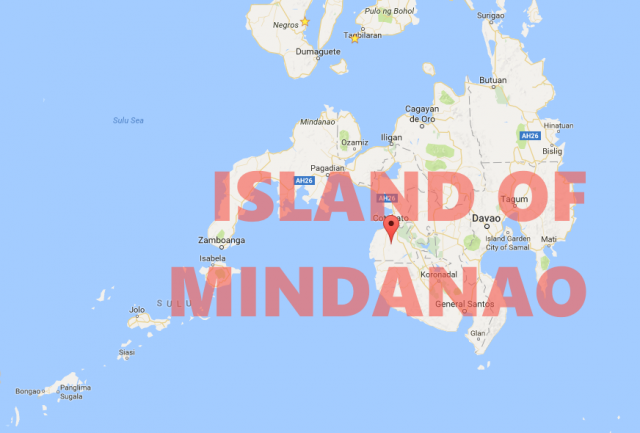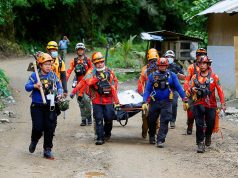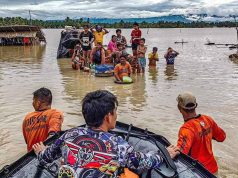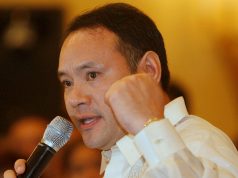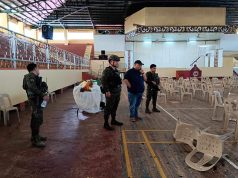The Armed Forces of the Philippines has thumbed down the proposal to issue identification cards for those professing the Muslim faith, saying this was a form of discrimination.
At the same time, an expert on migration issues has urged the public to view peace and development in Mindanao through the lens of land ownership, or the lack of it.
According to Philstar.com, AFP spokesman Brig. Gen. Restituto Padilla on Monday told Malacañang reporters it was “discriminatory” to ask for IDs “from just one sector of society.”
“Our proposal is when we start checking identification of individuals, it should not be aimed at certain sectors of our society but it must be applicable to everyone,” he said. “It’s good and it is logical to always check on the identities of everyone in your line that you are about to check.”
Central Luzon police director Chief Supt. Aaron Aquino had recently brought up the idea of having an ID for Muslims after consulting with Muslim religious and community leaders in the region. According to news reports, he had explained that it would prevent infiltration by extremists and their sympathizers.
Dr. Fermin Adriano, the lead author of a World Bank and International Organization for Migration report on land dispossession on Mindanao, also called the proposal a “blatant, inflammatory discrimination” against Muslims.
Speaking at a forum in the Ateneo de Manila University on Monday, Adriano reminded the audience of the historical injustice Moros and indigenous people in Mindanao had experienced over the centuries.
“Land lies at the intersection of peace and development in Mindanao,” his team’s report, titled “Land: Territory, Domain, and Identity,” says.
“Injustice and unjust dispossession of land – combined with confusing and overlapping legal and institutional frameworks for land administration and management – are a major trigger of violent conflict.”
Adriano explained that, up until the 1890s, it was the IPs who were the dominant groups in Mindanao, and Christian settlements could only be found in the northern parts not far inland.
But, in the 20th century, there was a systematic resettlement of Christians to Mindanao, which came in four waves.
The first occurred from 1898 to the Commonwealth Period. A number of policies were put in place that deprived the Moros and IPs of ownership of those lands. All land grants given by sultans, datus, and local leaders were deemed null and void. The Americans strengthened individual and corporate ownership of land – a contrast to the Moros’ and IPs’ communal view of land use.
The second wave was from 1946 to the late 1960s. Then President Ramon Magsaysay initiated the “land to the landless” resettlement program to counter the Hukbong Mapagpalaya ng Bayan (Huk) rebellion. Government agencies were formed to oversee the resettlement.
Many of those who moved to Mindanao were military personnel and Huk rebels. With a weak land administration system, and no formal way to delineate land owned by one person and from that owned by another, they resorted to violence to settle disputes, according to Adriano.
But the report also adds that by the late 1950s, many Moros and IPs did not oppose the Christian settlers. This was because they wanted to learn modern farming methods from them, and get workers who could clear the land. At the same time, disputes were not as bad since there was still an abundant supply of land in Mindanao.
The third wave, from the Martial Law days of the 1970s to the mid-1980s, saw militias wreaking havoc in Central Mindanao.
Former President Diosdado Macapagal had said: “The authorities sanctioned and believably helped arm Ilagâs, an armed band of Christian Filipinos, who have waged an operation to kill Muslims. Reports of massacres both of Muslims and Christians, in a mutual rampage of violence and killing as a result, have considerable truth in them.”
The Ilagâs were even believed to practice cannibalism, said Adriano, citing one of the books that served as his sources. One Ilagâ supposedly reasoned that it was easier to kill a Moro than it was to kill a boar.
“There was practically ethnic cleansing at that time,” Adriano said.
In fact, 52 percent of Mindanao’s population was made up of Moros and IPs in 1903, and this went down to 17 percent in 1970. The latest figure was 35 percent in 2010.
Moros and IPs became minorities in their own land, according to Adriano.
Mindanao is now experiencing the fourth wave, which began in the 1980s. It was characterized by an even more complicated legal framework. The Comprehensive Agrarian Reform Law placed the whole country under land reform coverage and strengthened individual ownership of land. The Mining Act promoted the mining industry and became problematic for the IPs’ ancestral domain in mineral-rich areas. At the same time, the Indigenous Peoples’ Rights Act recognized the right of IPs to own their lands under communal ownership.
Land dispossession had resulted in ethnic segregation. Before, communities were made up of Moros, IPs, and Christians. But they were forced to become ethnic communities by themselves.
Some 75 percent of Moros in Mindanao became concentrated in five provinces: Basilan, Lanao del Sur, Maguindanao, Sulu, and Tawi-Tawi.
Land dispossession also led to widespread poverty in Mindanao. The Philippines’ poverty incidence in 2015 was 21 percent. But this was a far cry from the poverty incidence in Lanao del Sur for the same year: 74 percent.
“This combination of historical forces, legal and institutional changes, violent conflict, growing land scarcity and rising land prices has produced a variety of land conflicts in the proposed Bangsamoro area — between Moros and IPs, Moros, and Christians, and among Moros themselves,” the report says.
“(T)he search for solutions must be seen not only through the lens of historical injustice committed by the central government and Christian settlers against Moros and IPs, but also reflect contemporary injustice driven by land grabbing and violent conflict.”
In short, the discriminatory ID proposal does nothing to heal the hurt but could rub salt to old wounds.

